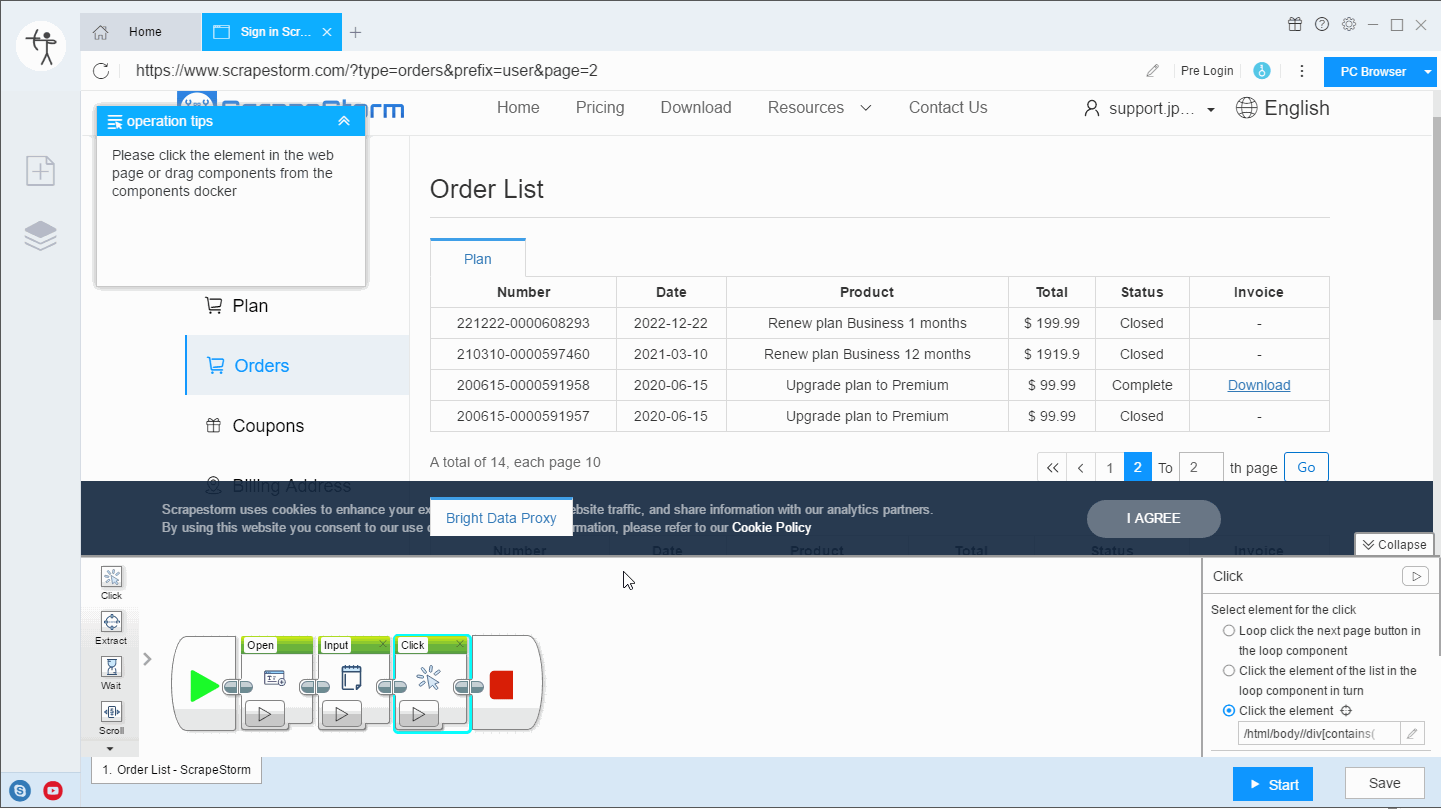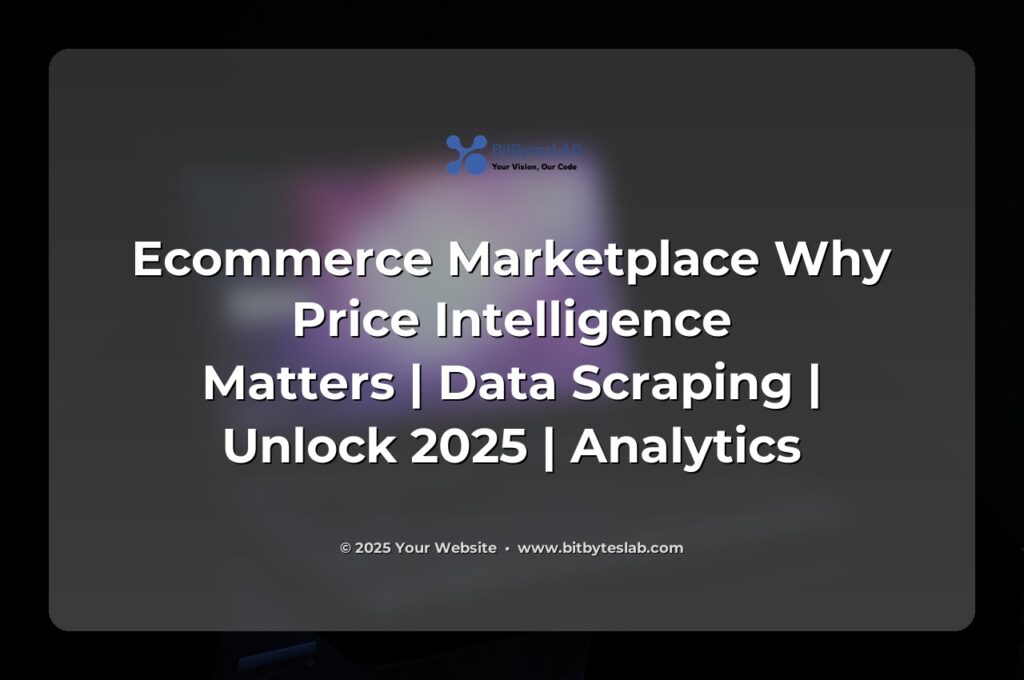Why Price Intelligence Matters in 2025: Unlock the Future of Ecommerce Analytics 🚀
Picture this: your competitors just dropped a price on their flagship product, and your sales dip by 12% the next day. You’ve never seen that happen before, and you’re left scrambling to understand the why. That’s the heartbeat of modern ecommerce—agility, data, and a relentless focus on pricing. As someone who’s spent years chasing price signals across Amazon, Walmart, Shopify stores, and niche marketplaces, I can tell you: the right price is more than a number; it’s a competitive advantage, a brand cue, and a real‑time revenue engine. In this post, I’ll walk you through the core concepts, share proven strategies, and show how a robust data scraping pipeline turns raw market noise into actionable insights.
Problem Identification: The Price Shock of the Marketplace ⚡
Every day, millions of product listings update—price, availability, reviews, shipping. If you’re only looking at your own catalog, you’re playing blind. That’s why price intelligence is not a “nice” a survival skill. Companies that ignore it often lose market share, misprice inventory, or miss out on profitable cross‑sell opportunities. The challenge? Balancing data freshness with cost, staying compliant, and turning noisy data into clear signals.
Core Concepts & Methodologies: The Building Blocks of Price Intelligence 📊
- Price Elasticity – Understand how sensitive your customers are to price changes versus your competitors’ moves.
- Price Anchoring – Set reference points that influence what customers consider “fair” or “out‑of‑range.”
- Canonical Product ID – Use GTINs, UPCs, or ASINs to match scraped data to your product catalog.
- Data Freshness vs. Cost – Decide how often you need to pull updates; real‑time is great, but it’s expensive.
- Legal & Ethical Boundaries – Respect robots.txt, TOS, GDPR, CCPA, and anti‑scraping laws to avoid fines and reputation damage.
These fundamentals are the compass for any price‑intelligence initiative. They inform everything from crawl frequency to how you model demand.
🚀 Why did the developer go broke? Because he used up all his cache! 💸

Expert Strategies & Approaches: From Data to Dollars 💡
Once you’ve mapped your concepts to a data pipeline, it’s all about execution. Here’s how I approach a price‑intelligence project:
- Discovery & Targeting – Crawl sitemaps and robots.txt to locate product pages, then filter by canonical IDs.
- Incremental Crawls – Use ETag/Last‑Modified headers or DOM diffing to pull only changed pages, saving bandwidth and cost.
- Data Enrichment – Combine scraped prices with sentiment from reviews, OCR on product images, and third‑party APIs for currency conversion.
- Alerting & Automation – Set threshold alerts for price drops, then trigger Slack or PagerDuty notifications for immediate response.
- Analytics & Modeling – Build price‑elasticity models, cluster products by price sensitivity, and feed predictions into dynamic pricing engines.
Remember, the goal is not just to collect data, but to transform it into a pricing engine that reacts faster than any human analyst could.
Industry Insights & Trends: What the Numbers Say 🌟
According to a 2024 Gartner survey, 68% of B2C retailers now use automated pricing tools, and 54% say that real‑time price updates have directly increased conversion rates. In the B2B space, price‑intelligence platforms can drive up to a 12% lift in average order value by aligning prices with market demand. Those numbers are not small—each percentage point can translate into millions of dollars for large retailers.
Another trend that’s reshaping the landscape is the rise of GraphQL APIs. More marketplaces are exposing clean, structured endpoints, making it easier to pull product data without scraping. But the competition is on the most accurate price history, so having a sophisticated scraping backbone remains essential.
🐍 Python is named after Monty Python, not the snake. Now that’s some comedy gold! 🎭

Business Applications & ROI: Turning Numbers into Profit 💪
Here are the most tangible business outcomes you’ll see when you invest in price intelligence:
- Dynamic Pricing – Adjust prices in real time based on competitor moves, demand spikes, or inventory levels.
- Margin Optimization – Identify pricing sweet spots that maximize profit without sacrificing volume.
- Brand Protection – Spot counterfeit listings or unauthorized sellers and take swift action.
- Inventory Management – Forecast demand more accurately, reducing overstock and stockouts.
- Ad Spend Efficiency – Correlate promotional price changes with ad performance to fine‑tune budgets.
In my experience, companies that integrated a real‑time price‑intelligence layer saw an average uplift of 9–12% in gross margin within the first six months. That’s a massive return on a modest investment in data infrastructure.
Common Challenges & Expert Solutions: Overcoming the Hurdles ⚙️
- IP Bans & Rate Limits – Mitigate with residential proxies, user‑agent rotation, and exponential back‑off.
- JavaScript‑Heavy Sites – Leverage headless browsers with stealth mode to render dynamic content.
- CAPTCHAs – Integrate crowd‑sourced solvers or human‑in‑the‑loop for persistent obstacles.
- Legal Restrictions – Maintain a compliance matrix, honor robots.txt, and implement data minimization.
- Data Quality Drift – Employ schema validation tools (Great Expectations) and continuous selector monitoring.
- Scalability Bottlenecks – Adopt async I/O, worker pools, and container orchestration to scale horizontally.
By anticipating these pain points, you can build a resilient pipeline that delivers clean, actionable data without breaking the law or your budget.
Future Trends & Opportunities: Looking Ahead to 2025 and Beyond 🔮
What’s next for price intelligence?
- AI‑Driven Extraction – Models like LayoutLMv3 will parse PDFs, complex layouts, and even images with near‑human accuracy.
- Server‑less Scaling – Lambda@Edge and Cloudflare Workers allow instant, cost‑efficient scraping events.
- Privacy‑Preserving Analytics – Federated learning and differential privacy will let you combine data across partners without exposing sensitive details.
- Real‑Time Price Feeds – WebSockets and SSE will push price updates to dashboards in milliseconds.
- Predictive & Reinforcement Learning Models – Automated price optimization that learns from every sale.
Staying ahead means investing in these next‑gen tools now, before the market saturates and the competitive edge fades.
Conclusion: Your Competitive Edge Starts with Data 📈
Price intelligence isn’t a luxury—it’s the pulse of every successful ecommerce operation. With a solid data scraping foundation, real‑time analytics, and a keen eye for market signals, you can outmaneuver competitors, protect your brand, and unlock higher margins. The future belongs to those who can turn raw price data into strategic decisions, and that futurep>
Want to build a custom price‑intelligence solution that scales with your business? BitBytesLab specializes in web scraping, data extraction, and analytics for ecommerce. Contact us today to start turning market noise into profit.

